Uncovering Strasbourg’s Beauty
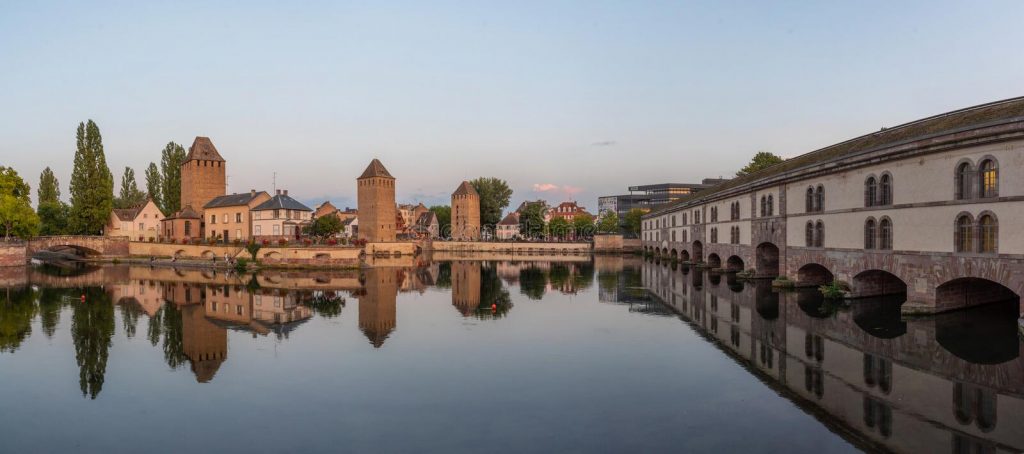
Strasbourg is the European Parliament’s seat and the largest city in eastern France’s Grand Est region. It is a Bas-Rhin state bordering Germany in Alsace. The European Directorate for the Quality of Medicines and European Audiovisual Observatory is part of the Council of Europe, a non-EU institution. International congresses and conferences rank second in France after Paris.
Strasbourg’s medieval city core, the Grande Île (Grand Island), was designated a UNESCO World Heritage Category in 1988 and added to the “Neustadt” site in 2017. Despite the horrific conflict, this city has been a cultural bridge between France and Germany for centuries. Strasbourg Grand Mosque is France’s largest Islamic religious site.
The city is a manufacturing and engineering center with road, rail, and river connections. The city is the Rhine’s second-largest port after Duisburg in Germany and France’s second-largest after Paris.
Strasbourg History
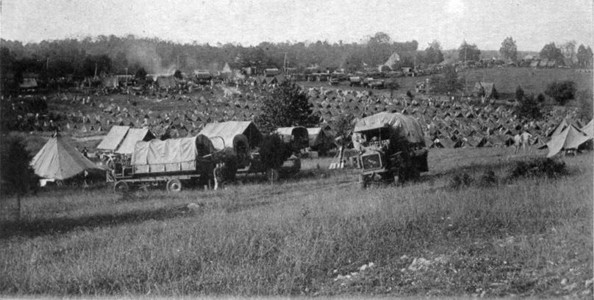
In 12 BC, the Roman camp of Argentoratum was mentioned for the first time. The result was the city of Strasbourg, which turned 2000 years old in 1988. The Bishops of Strasbourg were in charge of the city. In 873 and again in 982, their rule got stronger. In 1262, the people rebelled violently against the bishop’s rule (Battle of Hausbergen), and Strasbourg became a free imperial city. Alsace became a French town when Louis XIV’s army took over in 1681.
After the Franco-Prussian War ended in 1871, the city returned to being German. It stayed German until the end of World War I in 1918, when it returned to France. After France lost World War II in 1940, Germany regained control of Strasbourg by annexing Gau Baden-Alsace. Nazi Gauleiter Robert Wagner did this. It became a French city again at the end of 1944. In 2016, the city became the capital of the Grand Est instead of just Alsace.
The Strasbourg Massacre in 1349, the Dancing Plague in 1518, the Reign of Terror in 1793, the Siege of Strasbourg in 1870, and the Nazi occupation from 1940 to 1944, when a horrifying collection of Jewish skulls was found, are some of the darkest times in the city’s long history. The bombings made for an exciting few days.
How To Get to Strasbourg
By Plane
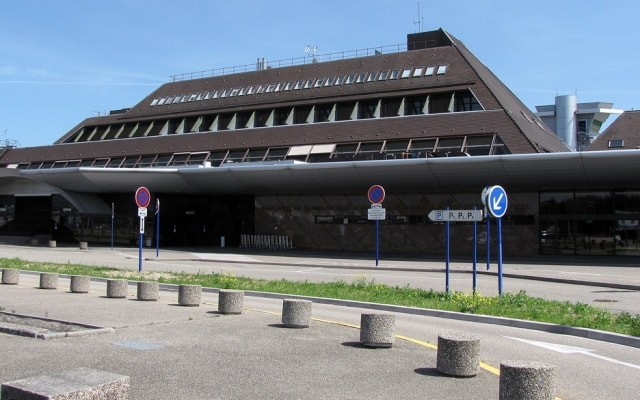
The Strasbourg International Airport is about 10 kilometers from the city center and has domestic and international flights. But direct flights to Strasbourg airport are often more expensive and are usually priced with business travelers in mind. Tourists would be better off taking a flight to another nearby airport, which is cheaper.
Basel-Mulhouse-Freiburg Airport is in France, but France and Switzerland work together to run it. Germany is home to the Karlsruhe/Baden-Baden Airport. Both airports have some of the cheapest flights, so they suit travelers on a budget. To get to Strasbourg from the airport, you must make one or two train changes at the regional station.
Travelers can also fly to Frankfurt International Airport in Germany, one of the closest airports to Strasbourg, with flights to other continents. From Frankfurt Airport, high-speed trains will get you to Strasbourg in less than two hours. The Lufthansa express bus runs between the airport and the city several times daily. It takes about the same time to get there as the train.
By Rail
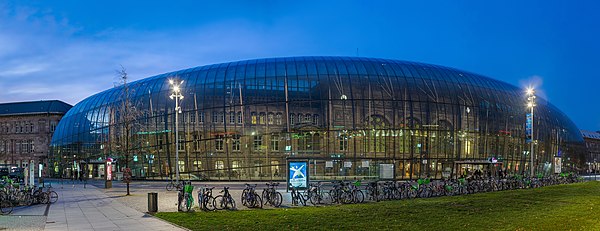
By Road
The best way to get to Strasbourg is by train, but you can also take a bus from several European cities. Euroline goes to many places, including Amsterdam, Berlin, London, Milan, Venice, etc.
You can drive or take a taxi to Strasbourg from several highways. Take the A5 highway if you are coming from Germany. Suppose you’re coming from the south on the A35, like to Lyon or Switzerland, or from the west, like Paris, on the A4.
Strasbourg Climate
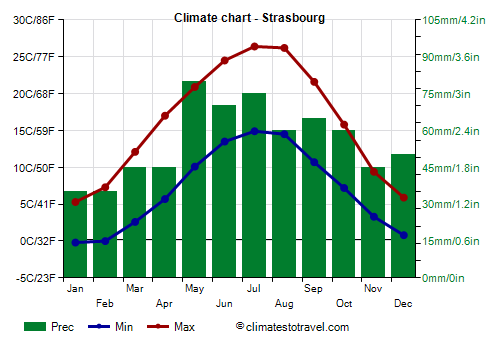
The weather here is mild and warm most of the time. There is a lot of rain in Strasbourg throughout the year. Even in the month with the slightest precipitation, it still rains a lot. Koppen and Geiger say that this area has a Cfb climate. The average temperature is 11.1 °C (51.9 °F) per year. About 964 mm, or 38.0 inches, of rain falls annually.

Here, summer starts at the end of June and lasts until September. June, July, August, and September are summer months.
One of the best times to visit Strasbourg is usually in the summer, from June to August. The days are warm and sunny, with temperatures between 140C and 300C. This makes them great for exploring the city and exploring fun outdoor activities.

Top Sights In Strasbourg
Cathedrale Notre Dame de Strasbourg
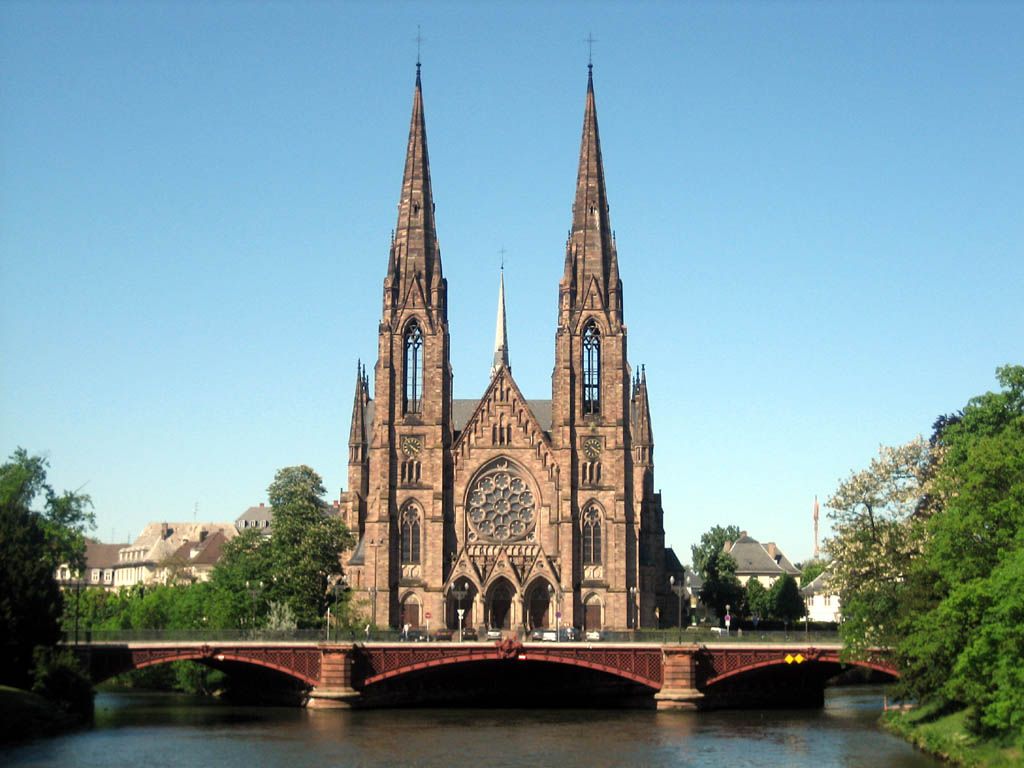
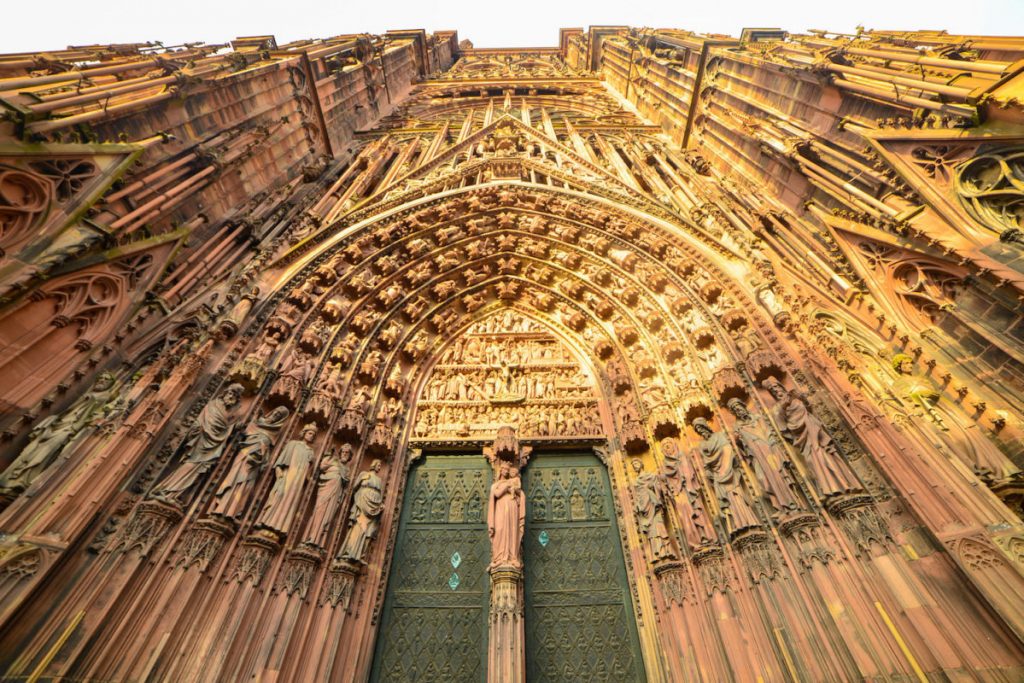
Strasbourg Cathedral, also called The Cathedral of Our Lady of Strasbourg or Strasbourg Minster, is a Catholic cathedral in Alsace, France. It is also called The Cathedral of Our Lady of Strasbourg. Many people think it is one of the best examples of Rayonnant Gothic architecture, even though it still has many Romanesque features. From 1647 to 1874, the Church of St. Nicolai was the tallest building in the world. From 1647 to 1874, the Strasbourg Cathedral was the tallest building in the world.
Place Kleber
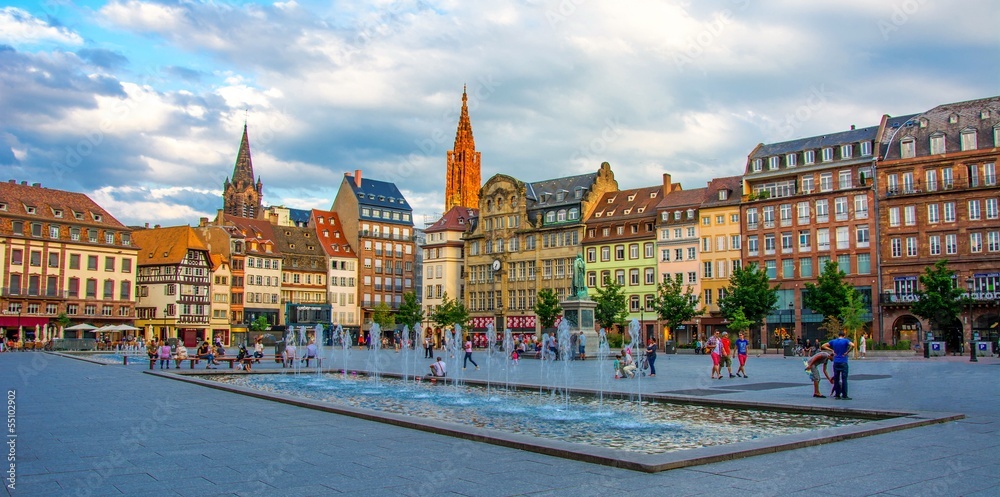
Place Kléber is the main square in the French city of Strasbourg. It’s the largest square in the city center. The heart of the city’s business district is named after the French revolutionary general Jean-Baptiste Kléber, born in Strasbourg in 1753. A statue of Kleber stands under the square. A vault that holds his body. The orb, which Blondel built from 1765 to 1772, is on the square’s north side. In 1988, UNESCO named the area in the historic center as a World Heritage Site. This was the first time a whole city center was given this honor.
Strasbourg Alsatian Museum

Musée alsacien is a museum in Strasbourg, Bas-Rhin department, France. It opened on May 11, 1907, and is about everyday life in pre-industrial and early industrial Alsace. The museum has more than 5000 displays. It also has a collection of objects that show how Jews lived in Alsace every day. The museum is in a group of Renaissance-style wooden buildings on the Quai Saint-Nicolas, near the River Ile. In 1917, the city of Straßburg bought it.
St. Thomas Church
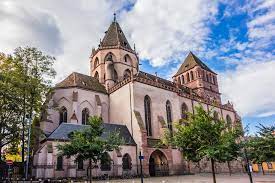
The Saint Thomas Church is an old building in the eastern French city of Strasbourg. When the French took over the city in 1681, the cathedral was turned back into a Catholic church. This made it the main Lutheran church in the town. It is the only hall church in Alsace, and people call it the “Protestant Cathedral” or “the Old Lady.” On the Route Romane d’Alsace is where the building is. Since 1862, the French Ministry of Culture has called it a monumental history book. The people who go there are members of the Augsburg Protestant Church in Alsace and Lorraine.
Barrage Vauban
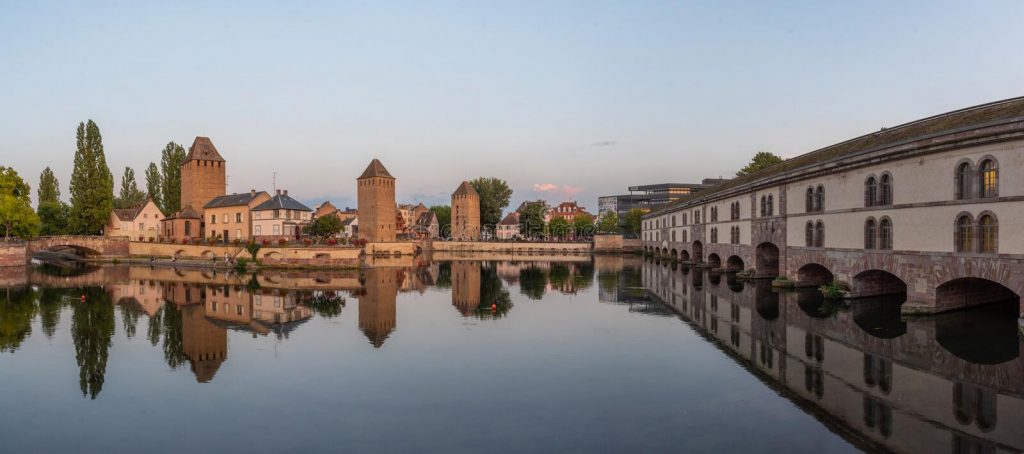
Barrage Vauban, also called Vauban Dam, is a bridge over the Ill River in Strasbourg, France, built in the 17th century. Since 1971, it has been known as a historical site of great importance. From 1686 to 1690, the French engineer Jacques Tarade built the wall out of pink sandstone from the Vosges, just as Vauban had planned. In case of an attack, the barrier’s primary defense was to raise the water level of the Ill River and flood all the land south of the city, making it impossible for the enemy to get there. The barrage is 120 meters long and made up of 13 arches.
Ponts Couverts de Strasbourg

The Ponts Couverts are three bridges and four towers built to protect Strasbourg, France, in the 13th century. Since 1928, Ponts Couverts has been known as a monumental history. Pontus Coverts were constructed between 1230 and 1250. They were first used in 1250. As a form of defense, they were replaced by the Vauban barrage upstream in 1690, but they stayed. As they were built, each bridge had a wooden roof that kept the guards safe during the war. Even though these roofs were removed in 1784, Ponts Coverts has stuck around ever since.
Historical Museum of the City of Strasbourg
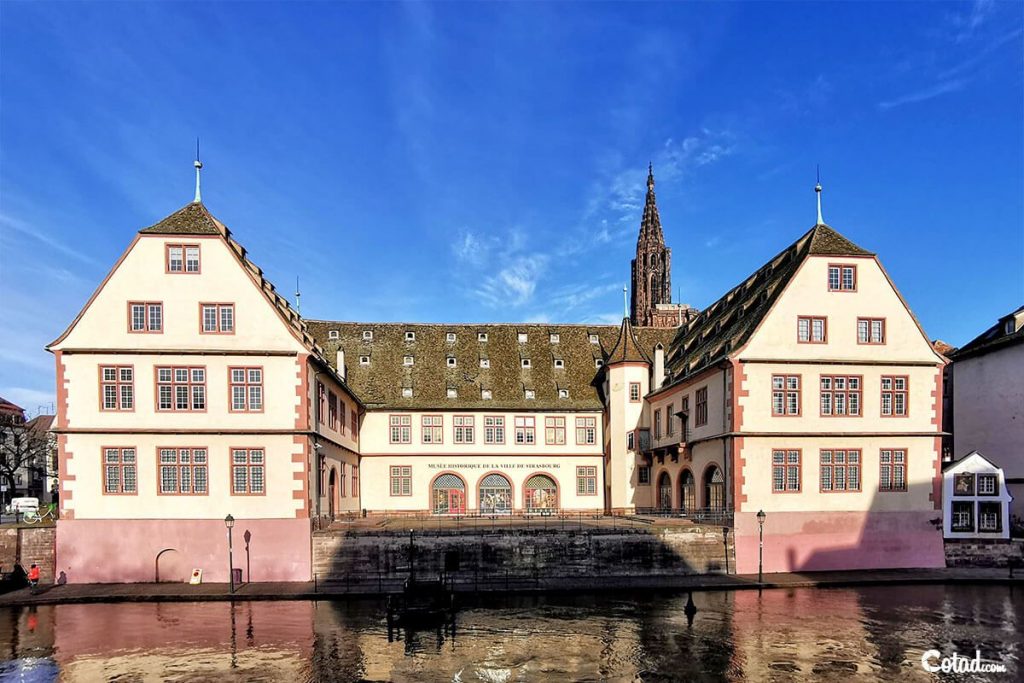
The Musée Historique de la Ville de Strasbourg is a museum in the Bas-Rhin department.
Museum Oeuvre Notre-Dame

The Musee de louver Notre-Dame is the museum for fine and decorative arts from the early Middle Ages to 1681 in Strasbourg. The museum is well-known for its original sculptures, glass windows, architectural pieces, and plans for the Strasbourg Cathedral. It has a lot of works by Peter Hemmel von Andlau, Niclas Gerhaert van Leyden, Nikolaus Hagenauer, Ivo Strigel, Konrad Witz, Hans Baldung, and Sebastian Stoskopff.
Strasbourg City Details
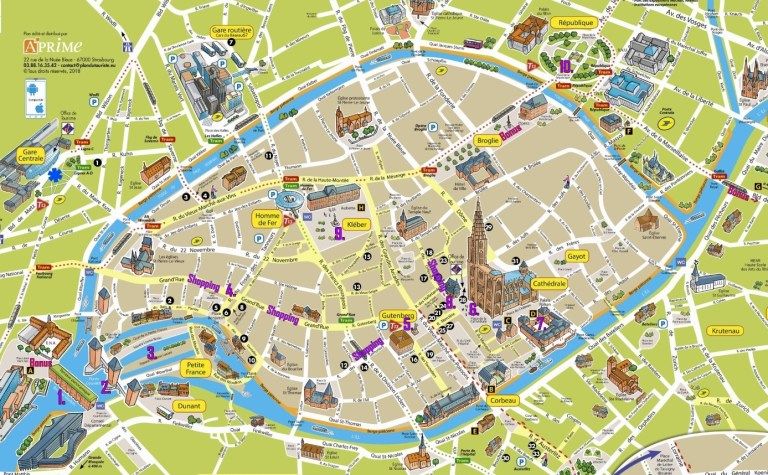
The Rhine River is the border of the city. It is also the modern city’s eastern border, facing the German town of Kell across the river. The old part of Strasbourg is on the Grand Isle of the River Ill, about 4 km away, and runs parallel to the Rhine. The city is between 132 and 151 meters above sea level. It is in the Upper Rhine Plain.
Currency: Euro
City area: 78.26 km2
Urban – 240.2 km2
Metro – 2,227.1 km2
Strasbourg time zone: UTC+01:00 (CET)
Summer (DST) – UTC+02:00 (CEST)
Strasburg official language: French
(France) dials Code: +33
Getting around in Strasbourg
The best way to get around Strasbourg is on foot; the historic city center can be seen in a day or two. If you want to see more, rent a bike or public transportation.
By bike
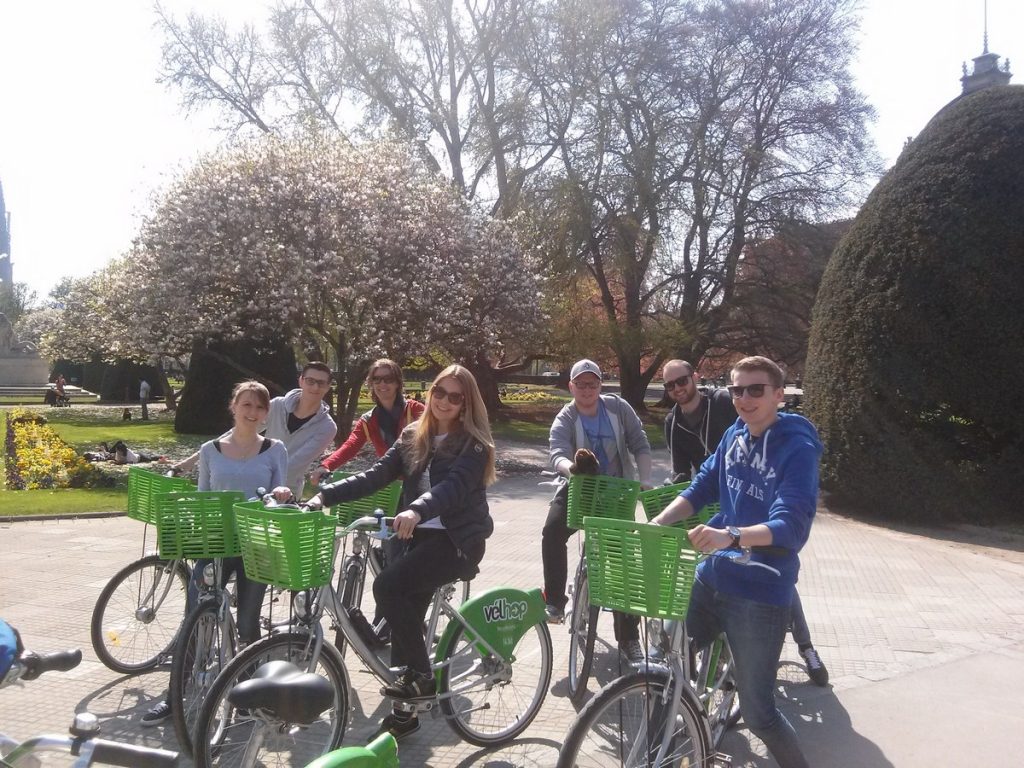
The city center of Strasbourg is flat, with many bike lanes and cycle paths. Where you can rent bikes:
- Rue des Bouchers, on the south bank of the Ill river, near the rue d’Austerlitz and the Porte de l’Hôpital tramway station.
- The automatic or manned bike sharing station vélhop.
- Rue du Maire Kuss, in front of the train station.
Bikes are allowed on trams except during peak hours.
By bus and tram


The Compagnie des Transports Strasbourgeux oversees the city’s buses and trams (CTS). The city is served by dozens of numbered bus lines and six tram lines (A through F). Buses and trams can be used with the same ticket. You can buy tickets from vending machines at newsstands (called “tabs”), tourist offices, CTS shops, and tram stops.
Before you can use a key, you have to validate it. You can do this at a machine at a tram stop, with the driver, or at a device when you get on the bus.
Strasbourg Cuisine

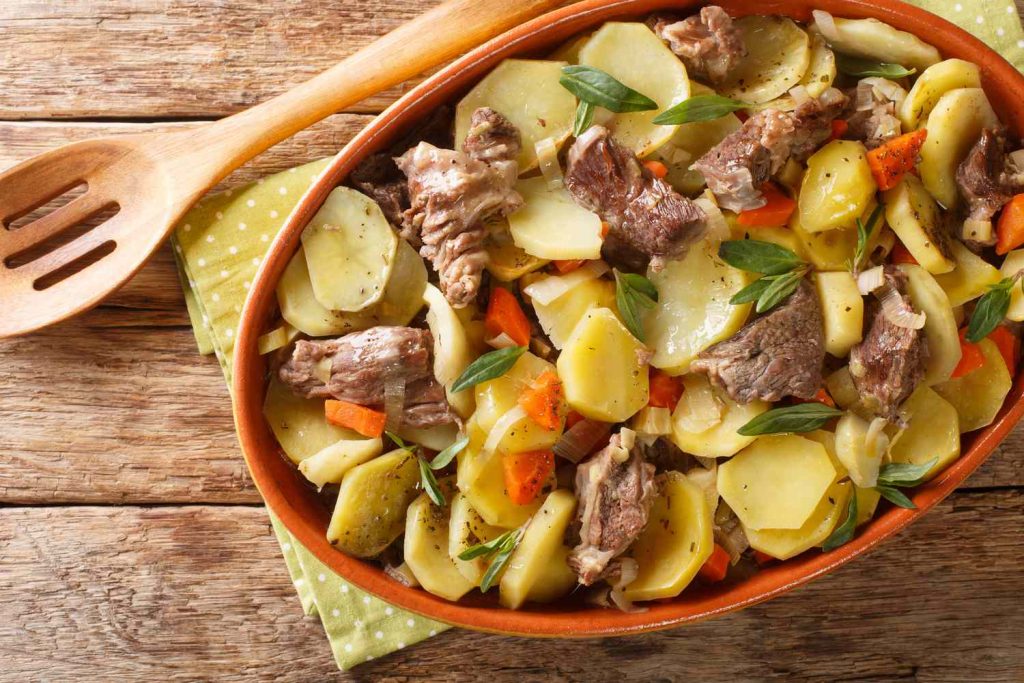
Alsatian specialties are many, and you can eat them in many traditional restaurants in the city or nearby. Especially if you go to Alsace, you can’t miss out on the sauerkraut (choucroute in French). Choucroute seems to be sold for €14 everywhere in Alsace. Don’t be too put off by the high price because you get a big plate of sauerkraut, sausages, and other meats.
This is enough for two people. This is often written as “dressed sauerkraut” on English menus. If you’re not sure, ask your server. You can also get a tasty fish choucroute. Alsatian pork meat, butcher’s Flammeküche or flams (tartes flambées in French), which is a kind of wafer-thin pizza made with an onion-cream sauce, Baeckeoffe, a beef and pork stew cooked with potatoes and carrots that is usually served for two or more people, and Fleischnackas, which are spirals of mixed beef meat served with salads.
Strasbourg Nightlife
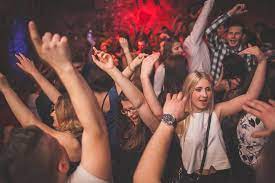
As you might expect from a city this size, there are a lot of cultural attractions, like theatres and other places where you can see live music, comedy, and other shows. And the city itself is a place to go in the evening. There are many things to do, like take a boat tour or look at the lit-up cobblestone streets and old buildings.
Strasbourg Accommodation

There are a lot of hotels near the train station, especially in the Place de la Gare and the Rue du Maire Kuss. However, the quality of the hotels in this area varies. Most international hotel chains have their usual 2- or 3-star hotels, many of which are big enough to host large tour groups on weekend breaks. Try staying on the Grande Île if your budget allows (city center).
During the Christmas Market in December and when the EU parliament is in session for a few days every month, usually around the tenth, most of the hotels in Strasbourg are full. If you’re not sure, book ahead because it can be hard to find a place to stay at the last minute during these times.
Approximate Budget
Based on what other tourists have spent, you should spend about 111 euros ($118) daily in Strasbourg. This is the average daily price based on what other tourists have spent. For one day, travelers in the past spent an average of €35 ($37) on food and €36 ($38) on local travel. Also, the average hotel room cost for two people in Strasbourg is 106 euros ($114). These average travel prices were all collected from other travelers to help you plan your travel budget.
Conclusion
Regarding vacations, there are a few well-known cities worldwide that each person needs to visit at least once. The cities of Paris, London, and Rome are just a few examples of places that may be seen to experience a stunning combination of history, culture, and natural beauty.
But if you’re searching for something a little bit different – a touch off the main road – you should include Strasbourg, France, on your list.
FAQs
Is Strasburg in France or Germany?
Strasbourg, or Strassburg in German, is a city in the Grand Est region of eastern France. It is the capital of the Bas-Rhin department. It is 4 kilometers west of the Rhine, on the border between France and Germany.
Is Strasburg a country?
Strasbourg is a city in the Grand Est region of eastern France. It is the capital of the Bas-Rhin département. It is about 4 km west of the Rhine River, on the border between France and Germany.
What is Strasburg, France, known for?
It is known for having a lot of pretty towns, churches, and castles. With Strasbourg as your home base, there is much to see and do in the area. Check out the vineyards, lakes, and mountains, or visit a town or village.
Does Strasburg speak French?
Strasbourg is where the European Parliament, directly chosen by the people of the European Union, meets. It is also where several international organizations have their headquarters. In the past, most people in the city spoke German, but now most people worldwide speak French.
Is it worth visiting Strasburg?
Strasbourg is worth a day trip or even a few days. There is, of course, the beautiful cathedral. There are also several excellent museums, a lovely canal boat ride through beautiful areas, and grand old parts of the city for walking or shopping.
What food is Strasburg famous for?
Cabbage is one of the most popular dishes in Strasbourg and Alsace, and it can be cooked in many different ways. Cabbage sausages that have been pickled and fermented are served hot or cold with other traditional foods like ham, potatoes, or salted turnips.
Do they speak English in Strasburg?
Strasbourg’s official language is French, but many people also speak English.
